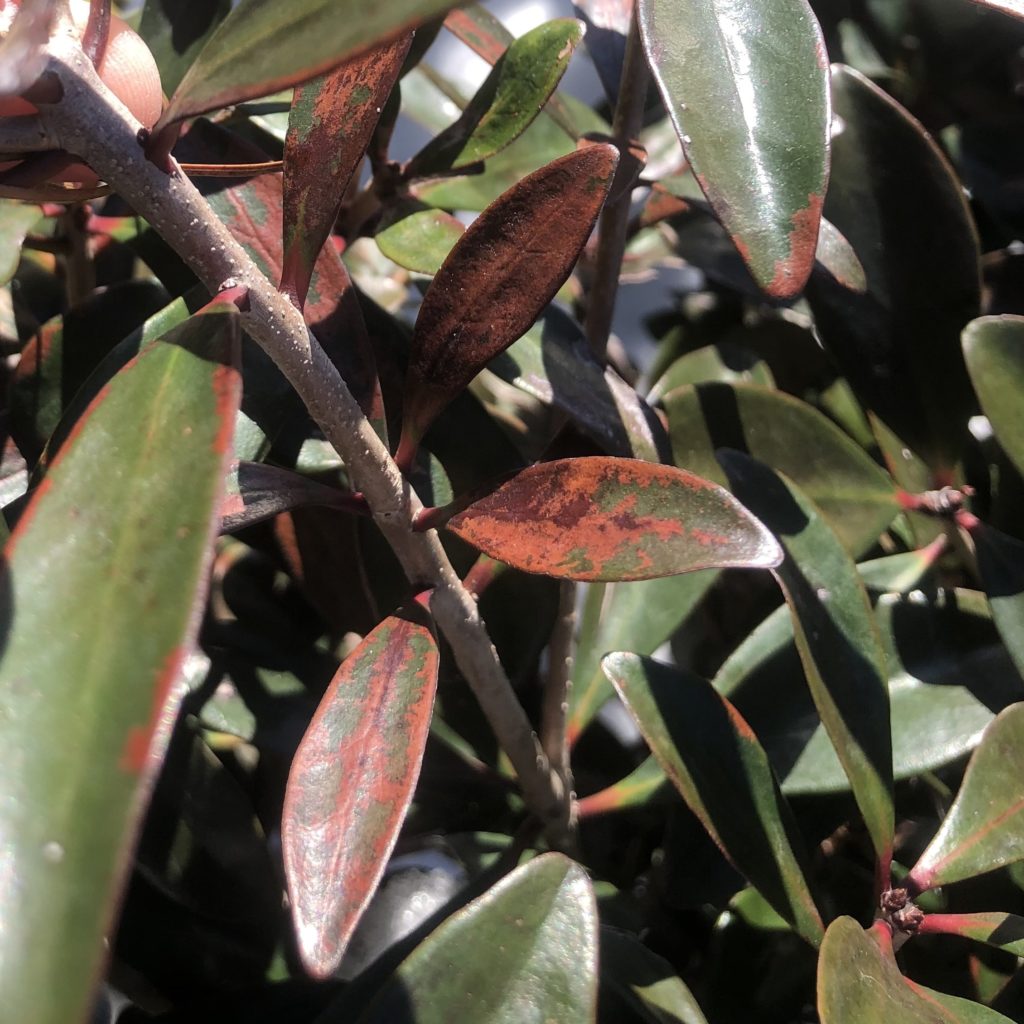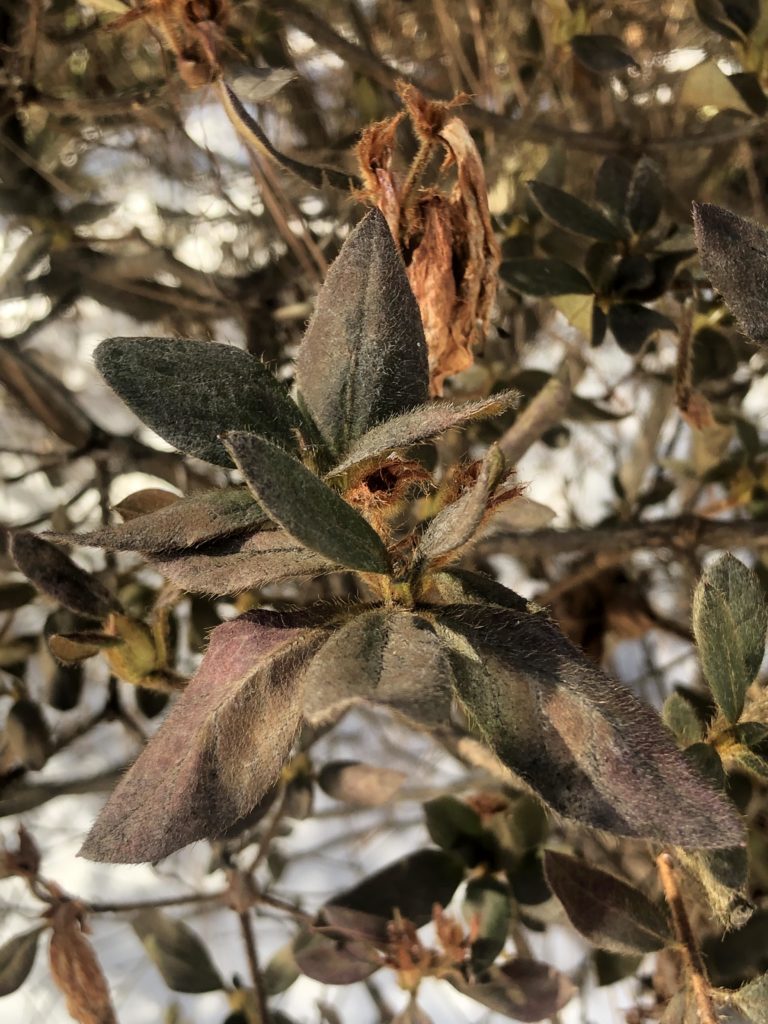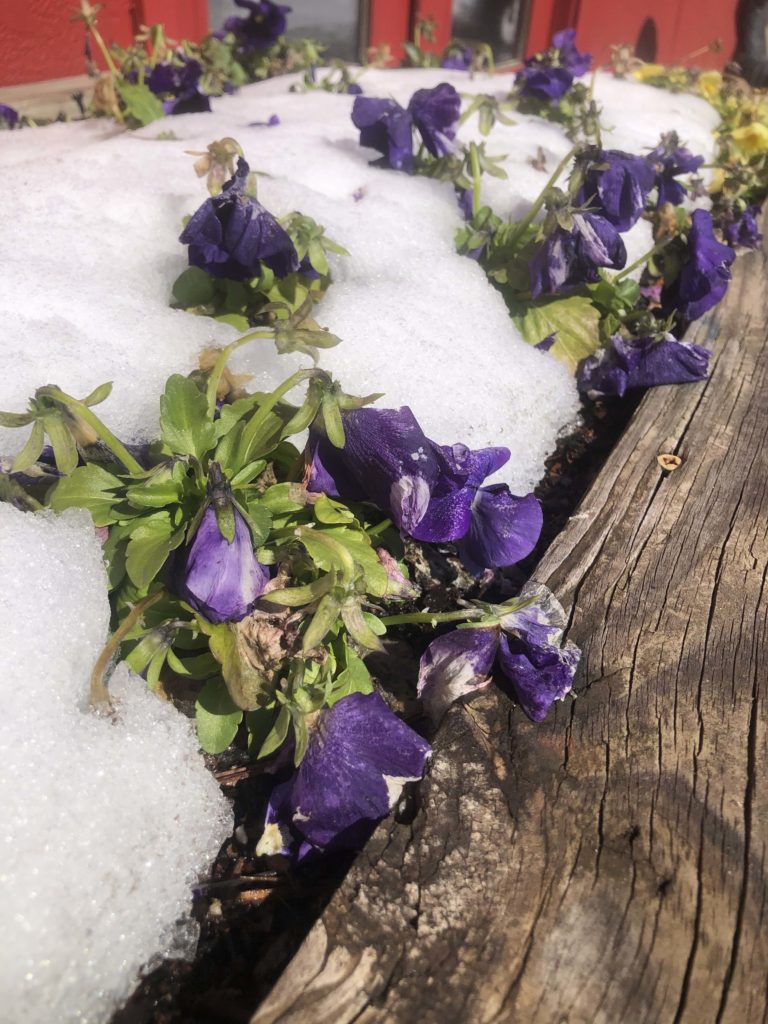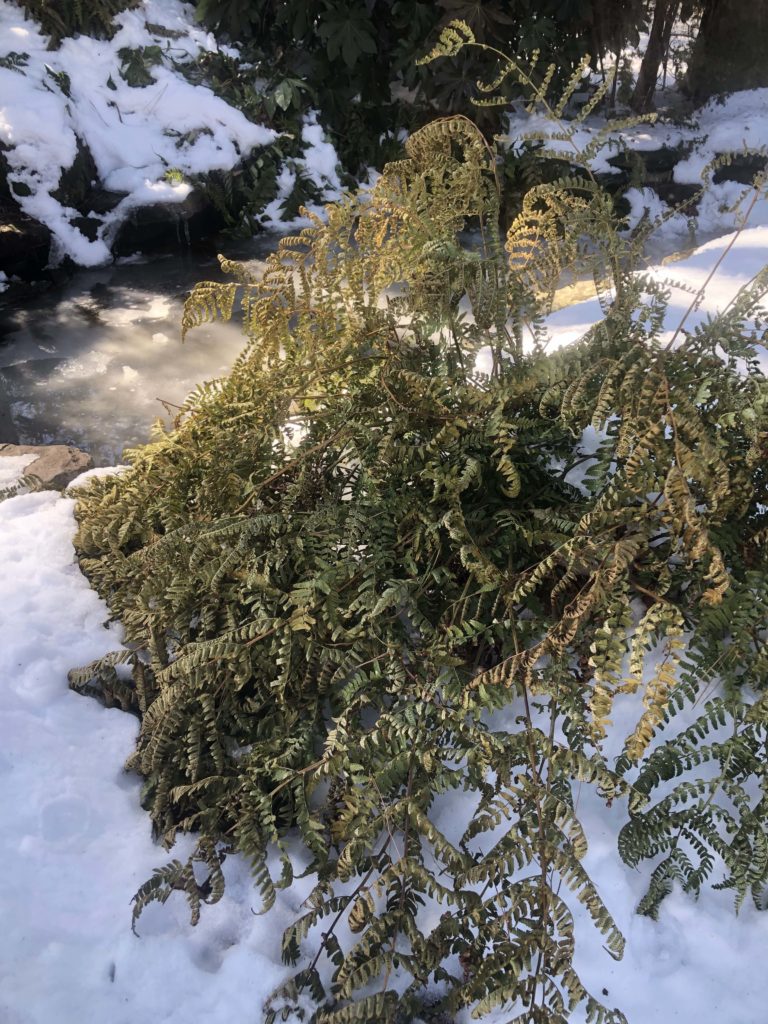Plant Recovery After a Hard Freeze

Preparation for a Hard Freeze
Let’s go back to the ‘before’ for a minute. Here is a link to our Freeze Warning post with extensive preparation tips.
Keeping your plants healthy and happy year round also helps reduce winter damage. Keep in mind that newly planted shrubs and trees might experience more freeze damage than older, healthy plants with a more established root system. Plants in pots are more susceptible to damage than ones planted in the ground.
During a Hard Freeze
If you cover plants, remember to keep an eye on them during warm days, so as not to overheat them with the covering. You may have to remove the covering for a period of time and the recover if another freeze is about to happen. Support blankets or take them off during snowfall to avoid plant breakage.
During a heavy snow event, plant branches may get weighed down and begin to bend or even break. When it is safe, try to knock snow off bending branches. Evergreens tend to experience this more; snow usually safely goes through bare branches just fine. However, snow can act as an insulator, protecting plant roots and even lower limbs so it’s not always a bad thing!
Ice is a different story, and unfortunately, can be much more difficult to trouble shoot. Avoid trying to remove ice from plant branches. They are brittle when ice covered and more likely to break.
Hardiness Zones
You may have noticed zones printed on plant tags and signs. Each plant has a zone that it should be hardy in; Little Rock is Zone 8a, which has an Average Annual Extreme Minimum Temperature of 10-15°F. Almost every year, we have experienced weather that has been in the 7a to 6b Zones, with actual temperatures reaching into the single digits and wind gusts over 30 MPH, taking feels-like temperatures into the negative range. Here is a link to a Plant Hardiness Zone map for reference. Even plants that are considered winter hardy in our zone (and even colder zones) can quickly show significant damage from these extreme temperatures, and wind chill factors.

Recovery After a Hard Freeze
The signs of of freeze damage are evident on many plants but do not always look the same. On tropical and sub tropicals they may appear droopy or shriveled, like they are in need of water. Additionally they may turn for green to brown or purple, and stem splitting may happen. If this happens plant recovery is unlikely, or it may take several growing seasons to recover. In extended freezing temperatures, ice will form in the plant cell and the cells rupture causing damage to the plant tissue. This kind of damage is irreversible with most tropicals.
If you get caught off guard, or we have record breaking lows, and your plant suffer from a freeze, BE PATIENT, don’t go for the pruner and start cutting everything back. It may take several days or weeks to show how much damage has been done to your plant. If the plant top growth becomes mushy and soft, remove to avoid getting secondary fungal growth. Broken branches can be removed.
With many woody plants, we suggest waiting until spring when the new growth appears before pruning out damaged plant branches. You can check for life in woody plants by scratching the bark on the stems to see if it is green underneath, if you find green that branch is still viable and your plant is still alive.
As for right now, we are seeing partial defoliation, or at least leaf discoloration, of broadleaf evergreens. Again, don’t start pruning now; wait until new spring growth emerges and cut out branches that don’t leaf back out. Ideally, plants will shed damaged leaves and new ones will emerge this spring. Landscapes might start looking pretty bad before they recover. We already know this will be concerning and you will want to do something. Truly, the best thing you can do is have patience. If they haven’t leafed out in April, do a scratch test and go from there.

A Few More Tips for After an Unusually Hard Freeze
Cool season annuals such as pansies could look worse for the wear. Those planted in ground and covered are looking like they will be fine, but those in planters don’t seem to have made it through. We don’t cover pansies in our display beds and although there might be damage after extremely low temps,the plant roots usually make it through just fine. With temperatures are above 50 degrees for a few days, feed them with liquid fertilizer,such as Miracle Gro. You can also apply slow release Ferti-Lome Premium Bedding Plant Food if you haven’t given them any since planting. While it’s not necessary, deadheading (removing spent blooms) will encourage new blooms, give them a cleaner look overall and in general, help them recover faster.
With perennials, it’s a wait and see game. Tender perennials may struggle to come back or not come back at all but winter hardy perennials should fair better. Wait to trim woody perennials; examples of these include Russian sage and butterfly bush. You might find that they leaf out lower on the plant than usual. After they flush out this spring, cut dead growth off above where the new growth is emerging. For evergreen ferns, like the Autumn ferns shown below, remove all winter damaged fronds before new ones emerge.
For groundcovers like liriope, trim back as usual after this cold snap ends. Same with shrub roses. Getting rid of damaged growth could help them flush more strongly this spring. For tips on what to prune and when, visit this post.
Plants like lantana, Mexican petunia, and purple fountain grass are not perennial here, even though many people have them come back year after year. There is a good chance these plants won’t come back this year.
Protect your lawn by staying off it as much as possible until it dries out. Putting weight on saturated lawns can damage the root system and cause ruts. St. Augustine and Centipede turf grasses might have significant winter damage and fail to break out of dormancy this spring. There are no actions you need to take now, just prepare yourself for that possibility.
Speaking of lawns, if you haven’t applied pre-emergent (weed preventing herbicide) in the last 90 days, we suggest doing so. Weeds are opportunists and will start sprouting up in bare spots.

Long Term Recovery
Plants that seem fine for the next few months may suddenly show signs of root damage in the summer. This would happen if the root system or a large portion of the root system was damaged or killed due to these unusually low temperatures. The plant may not show the damage until the heat stress of summer arrives.
To give your plants a boost in April, feed with a balanced, slow release fertilizer such as Good Earth brand Jump Start or Ferti-Lome Start-N-Gro. Make sure the plant gets adequate water but avoid over watering.
Caring for your plants is a labor of love and it may take some additional time to protect them and help them recover from a hard freeze. If you have any questions, please reach out to us.